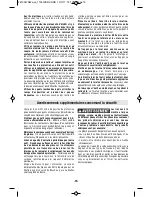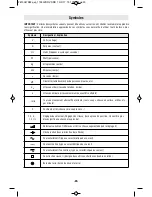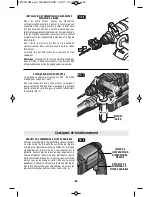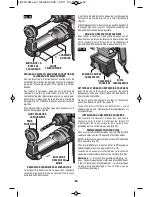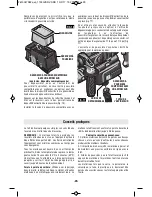
DRILLING WOOD OR PLASTIC
Do not drill into wood
with dust extraction
system mounted.
Wood chips are typically too
large and will clog the dust channel.
If backing block is not used, ease up on the
pressure just before the bit breaks through
the wood to avoid splintering. Complete the
hole from the opposite side immediately after
the point breaks through. If bit binds, reverse
the drilling operation to help remove the bit
from the work.
DRILLING METAL
Do not drill into metal
with the dust extraction
system mounted.
Hot metal chips can self-
ignite or ignite parts of the dust extraction
system.
Make a center punch in the material for
easier starting. Use enough pressure to keep
the bit cutting. If the bit is allowed to merely
spin in the hole, it will become dull within a
short time. When drilling a larger hole, it is
faster and easier on your power pack to first
make a smaller hole and enlarge it to the
required size. Lubricate the tip of the bit
occasionally with CUTTING OIL for easier
metal drilling. If bit binds, reverse the drilling
to help remove the bit from the work.
DRILLING MASONRY
Use carbide-tipped masonry bit for cinder
block, mortar, common brick, soft stone and
other materials. The amount of pressure to
be used is dependent upon the type of
material being drilled. Soft materials require
less pressure while the hard materials need
more pressure to prevent the drill bit from
skipping.
-15-
Dust Extraction (Model 11250VSR only)
For selection of dust collection systems and
operating instructions, see the Operating /
Safety Instructions for ‘Dust Extraction
Attachments for Hammers and Hammer Drills’
included with your tool or with the dust
extraction attachment.
2610047982.qxp_11250VSR,VSRD 10/2/17 1:01 PM Page 15



















